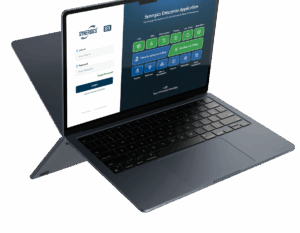In the world of inventory management, understanding the ins and outs of different inventory systems is crucial for businesses aiming to optimize their operations and maintain accurate stock levels. Among these, the Periodic Inventory System stands out as a traditional yet effective method for tracking merchandise. This blog delves into the workings of a Periodic Inventory System, exploring its definition, how it operates, and its advantages and disadvantages for businesses.
Understanding the Periodic Inventory System
A Periodic Inventory System is a method used by businesses to manage their inventory levels, where stock counts and the cost of goods sold (COGS) are determined at specific intervals. This could be monthly, quarterly, or annually, depending on the business’s preferences and operational requirements. Unlike its counterpart, the perpetual inventory system, which updates inventory records in real-time with each sale or purchase, the periodic system only updates at the end of each period.
How the Periodic Inventory System Works
The process begins with a physical count of the inventory at the end of the accounting period. Here’s a step-by-step breakdown of how the system works:
- Starting with the Beginning Inventory: At the start of the period, the business records the initial inventory levels, which include all the goods available for sale.
- Recording Purchases: Throughout the period, all purchases made are recorded in a purchases account. These records do not affect the inventory account immediately but are crucial for the end-of-period adjustments.
- Physical Inventory Count: At the end of the period, a physical inventory count is conducted to determine the actual inventory on hand.
- Calculating the Cost of Goods Sold (COGS): The COGS is calculated using the formula:COGS=Beginning Inventory+Purchases−Ending InventoryCOGS=Beginning Inventory+Purchases−Ending Inventory
- Adjusting the Inventory and COGS: The results from the physical count are used to adjust the inventory levels in the books, and the COGS is recorded in the income statement.
Advantages of the Periodic Inventory System
- Simplicity and Cost-Effectiveness: This system is relatively easy to implement and doesn’t require sophisticated software or technology, making it ideal for small businesses with limited budgets.
- Flexibility in Timing: Businesses can choose the frequency of inventory counts based on their operational needs and the nature of their inventory.
Disadvantages of the Periodic Inventory System
- Lack of Real-Time Data: Since updates are made periodically, businesses lack real-time insight into their inventory levels, which can lead to stockouts or overstocking.
- Potential for Inaccuracy: The longer the interval between counts, the higher the potential for errors and discrepancies due to theft, damage, or misplacement of inventory.
- Time-Consuming Inventory Counts: Physical counts can be labor-intensive and disruptive, especially for businesses with large volumes of inventory.
Conclusion
The Periodic Inventory System, with its simplicity and cost-effectiveness, offers a viable solution for many businesses, particularly small to medium-sized enterprises that do not require real-time inventory tracking. However, it’s essential to weigh its advantages against the potential drawbacks, such as the lack of real-time data and the potential for inaccuracies. Businesses must carefully consider their operational needs, the nature of their inventory, and their resources to determine if the periodic inventory system aligns with their overall inventory management strategy.
In the ever-evolving landscape of business operations, staying informed about the tools and systems available can significantly impact efficiency and profitability. The Periodic Inventory System represents just one of the many methodologies businesses can employ to manage their inventory effectively, highlighting the importance of choosing the right system for your business needs.











